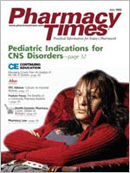Publication
Article
Pharmacy Times
Health Care Group Identifies IT Pitfalls
A panel of health care experts voiced their concerns about information technology (IT) to an Institute of Medicine (IOM) committee. Although IT can help improve patient care, there are many occasions when alerts from these systems are ignored. Also, standards need to be in place to guarantee that these IT systems can work with other hospital systems, according to the experts. The topics included bar coding, infusion pumps, and computerized physician order entry (CPOE).
A study at 6 California-based Sutter Health hospitals, which evaluated 17,025 attempted administrations over 4 days, found that the most frequent types of errors prevented included early doses (47%), no order in the system (27%), and discontinued order (13%). Gordon Hunt, senior vice president and chief medical officer for Sutter Health, told the IOM committee that a bar-coding system implemented at 9 of the company's hospitals helped prevent errors in 1.1% of attempted medication administrations.
Hunt stated, however, that multiple bar codes, numerous alerts from the system, and the countless interfaces between systems were examples of technical obstacles that hospitals face.
An analysis of smart pumps found that standalone pumps cannot identify whether a medication is wrong, whether it is being administered to the wrong patient, or whether the dose is incorrect, if it is given within the system's alert parameters. To be successful, these systems must be incorporated with CPOE and bar-code medication administration systems, reported Jeffrey Rothschild, MD, of Brigham and Women's Hospital, Boston, Mass.
CPOE systems have similar problems, according to David Classen, MD, vice president of First Consulting Group. He said that the number of alerts that CPOE systems generate may lead to "alert fatigue"and result in providers ignoring them. Furthermore, many hospitals have not integrated their CPOE systems with pharmacy information systems and nursing documentation. As a result, providers are forced to deal with numerous alerts from various systems.

Newsletter
Stay informed on drug updates, treatment guidelines, and pharmacy practice trends—subscribe to Pharmacy Times for weekly clinical insights.






